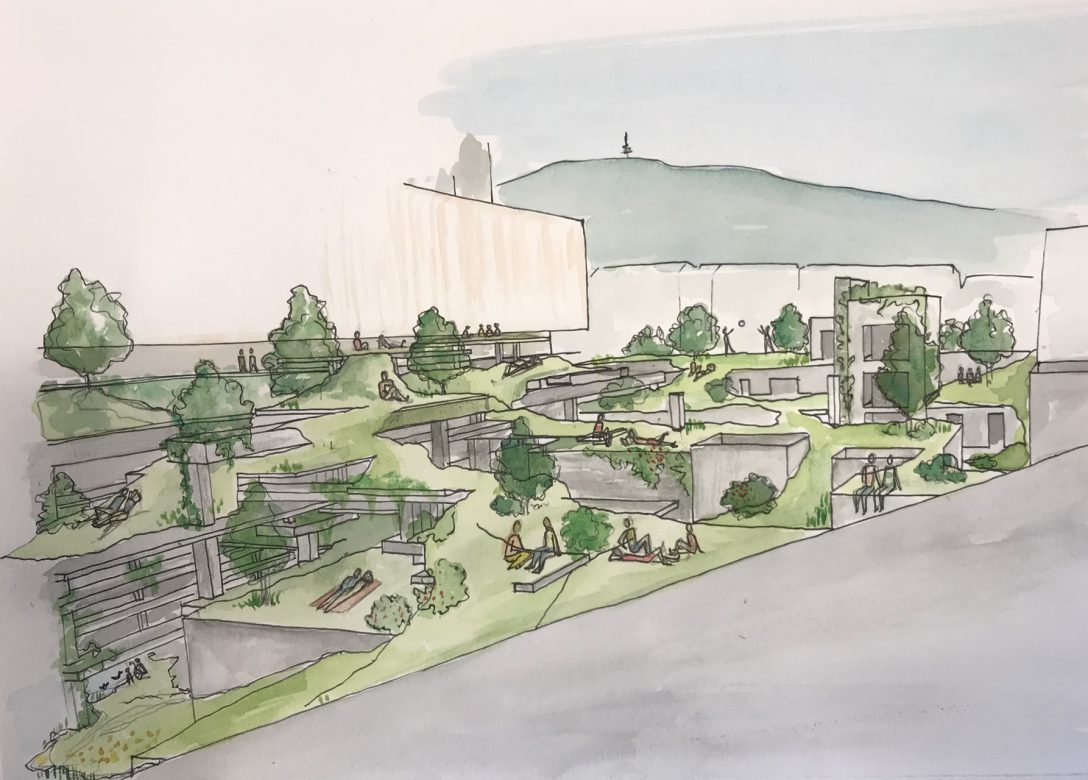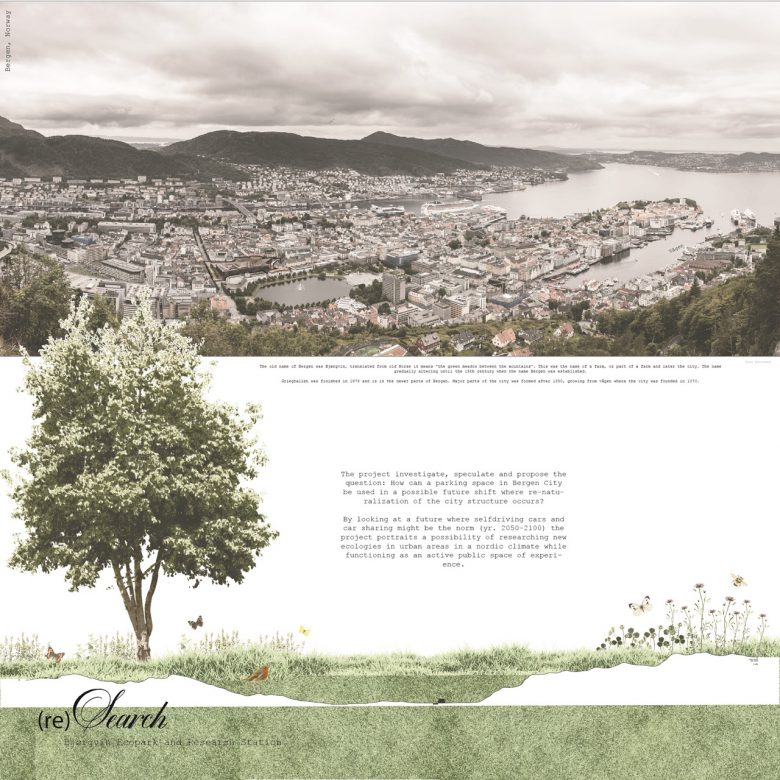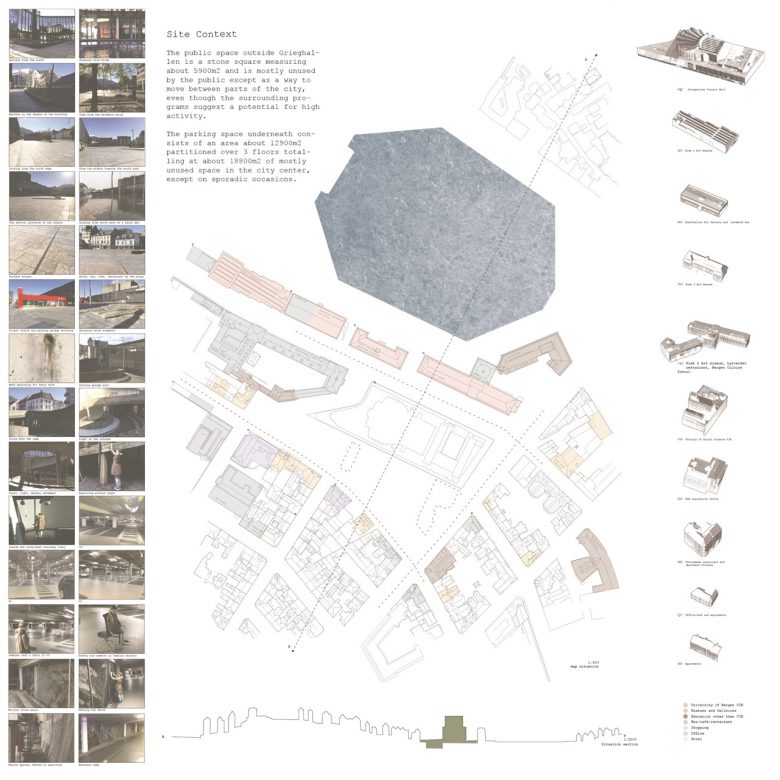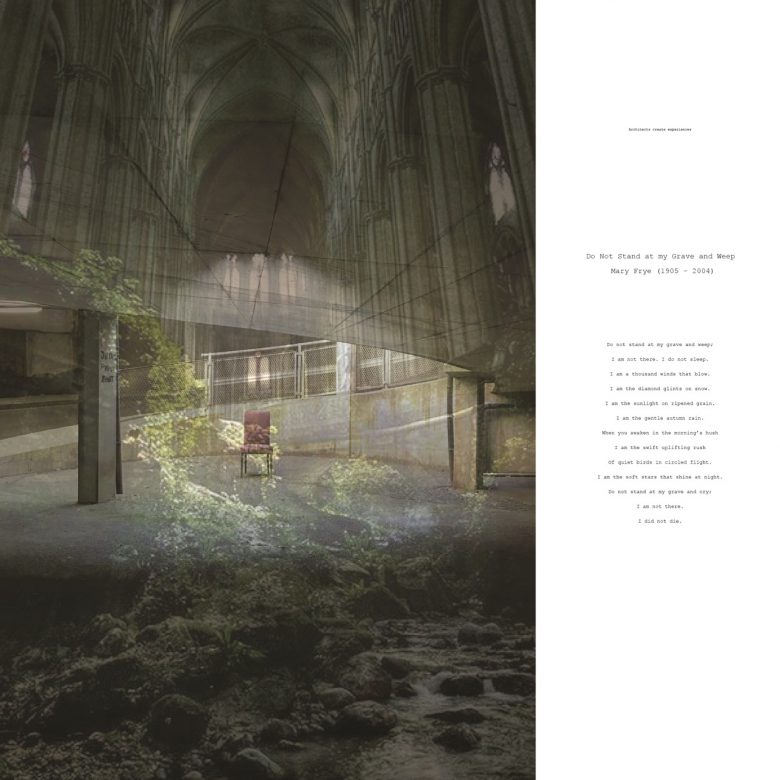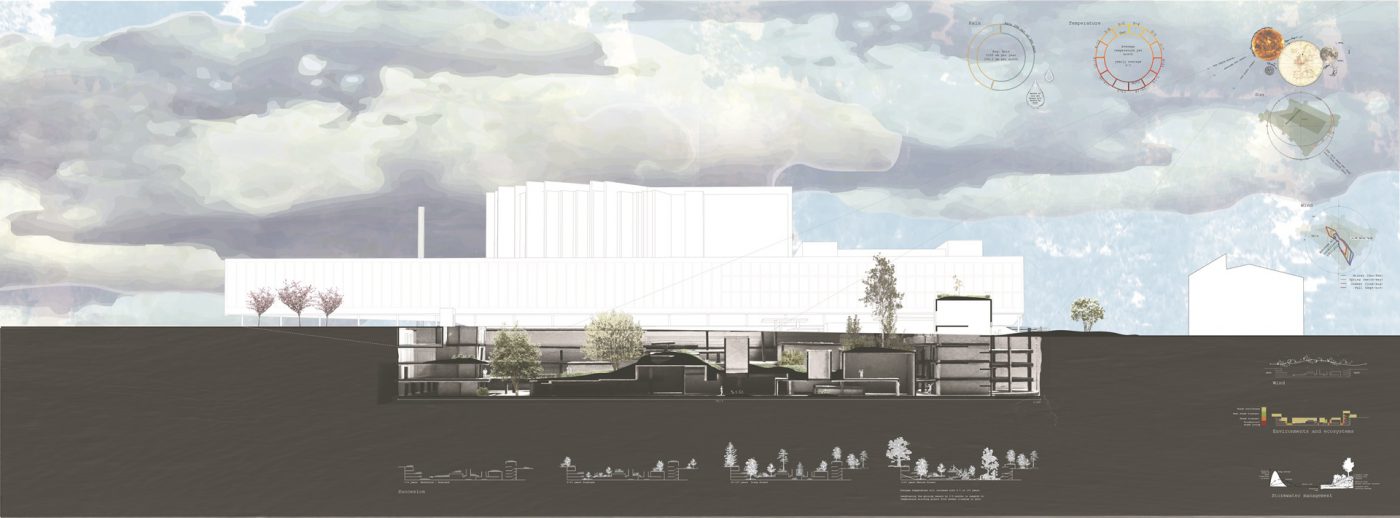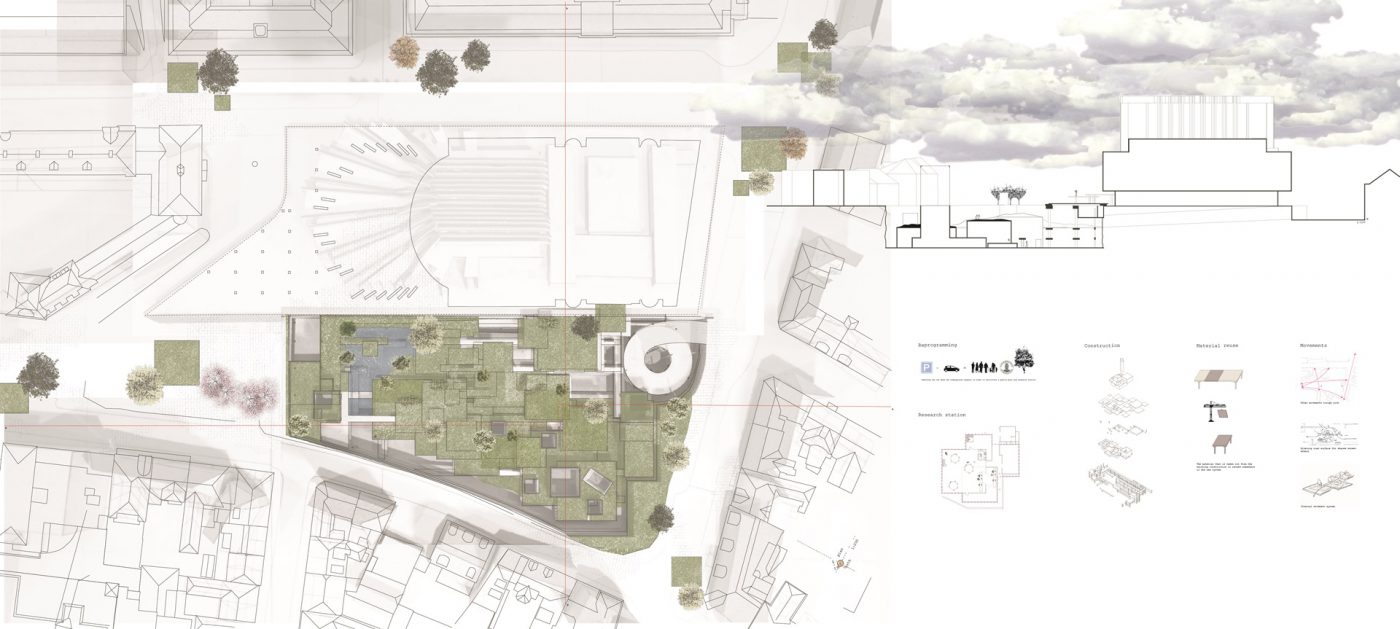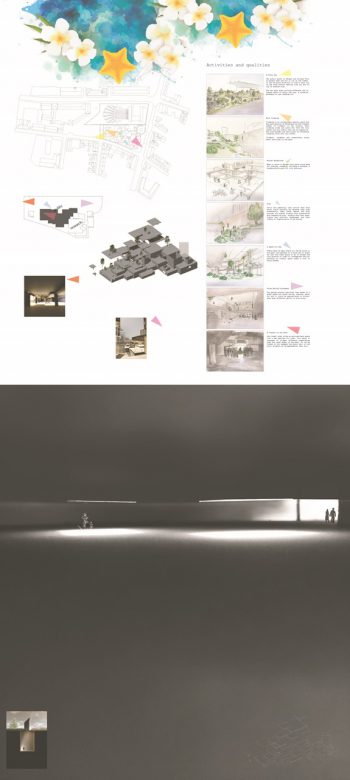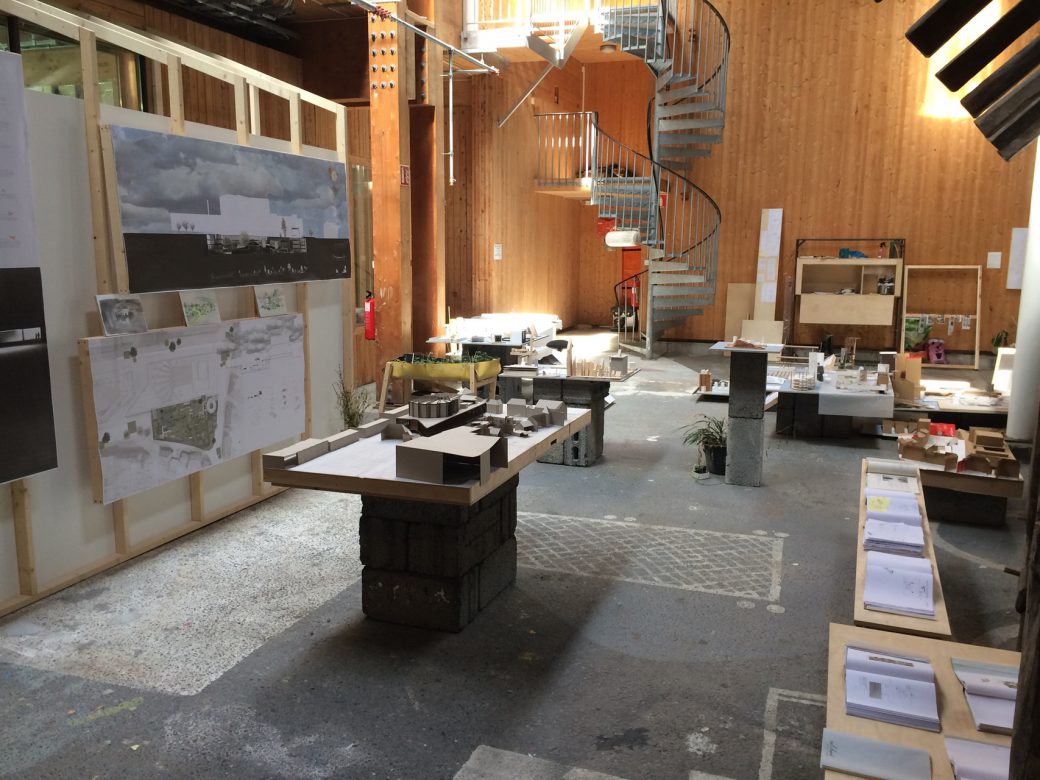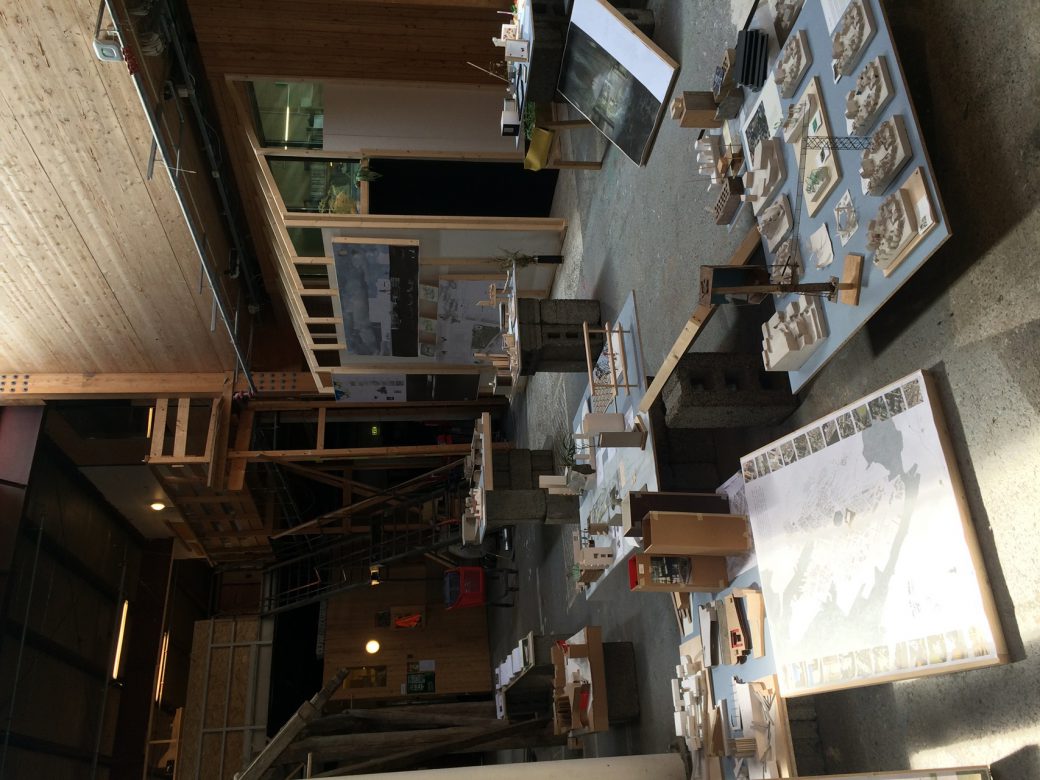
The city of Bergen is situated in a valley with ”The Seven Mountains” encircling it and is Norways second biggest city with about 280 000 people usually referred to as the capital of the west-coast of Norway. The city itself is quite dense as it is pressed together by the surrounding topography and could be comparable in urban density to european cities today with structures from the middle-ages. (The density of people is not necessarily that high)
Looking at cities today where in many countries there is an exponential growth, projecting that about 68% of the worlds population will live in cities within the next 30 years[1] , we recognise that there is much to be gained by considering urban environments differently. Bergen in this context might be viewed as an isolated and small city not to much affected by these projections, but it might still be viewed as a manageable scale regarding different urban experiments in the nordic cities.
Our speculation lies in the fact that amongst other things carmanufacturers focus on the development of self-driving cars and the possibility of carsharing. We also see that there is a transition in, at least Norwegian society, that owning a car is becoming less and less important with the emergence of carsharing platforms, especially in urban areas. Parking space is a very uneffective use of space as it uses a lot of landmass and is primarily used for one thing; namely storing cars. If carsharing is adopted by all people you could use your digital device to fetch a car whenever the need arises and we would subsequently reduce the need for parking space in urban areas by about 97%[1]. The cars would be moving around most of the day and the roads become an active parking space.
We choose to work with a square and the parking space underneath connected to Bergens main music venue, Grieghallen as a result of our investigations. To find out more, download our program.

